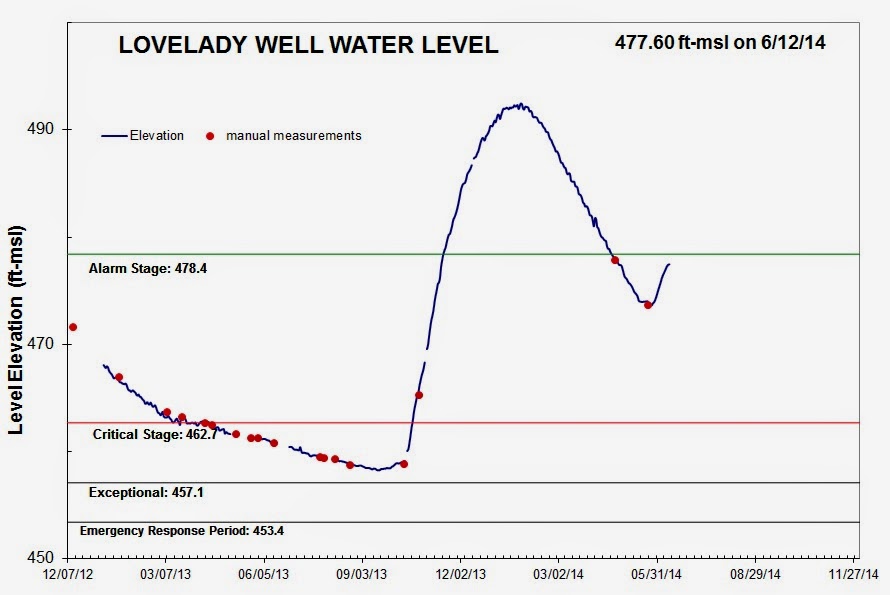On Thursday, June 26th, the Barton Springs/Edwards Aquifer Conservation District Board of Directors voted to lift the drought declaration and enter into the Water Conservation Period (10% voluntary conservation). Recent rains have saturated soils and allowed for enough runoff to fill creeks and raise water levels in the aquifer. One of the area’s two groundwater drought indicators, the water level in the Lovelady Monitor Well, has been rising slowly since the May rain events. On Wednesday, June 18, the water level in the Lovelady Well crossed above the District’s drought threshold. The other drought indicator, sustained flow rate at Barton Springs, moved above its threshold after the precipitation events in mid-May and has remained there. Both indicators need to be above their designated thresholds – and currently are – to emerge from drought.
The District declared a groundwater drought on April 24, 2014, just two months ago. While the aquifer has received some recharge and has passed into Water Conservation Period status, it is still below average water storage capacity. During the Water Conservation Period, from May through September, groundwater users are encouraged to maintain conservation practices, but mandatory water use restrictions are lifted.
Brian Smith, Aquifer Science Team Leader, stated that, “While the drought triggers are both above their thresholds now, July and August are typically very hot and dry, so we could see spring discharge and water levels start to decline again. Without more significant rainfall, it could be a month before one or both drought triggers are back below their thresholds and our Board could declare drought again.”
Groundwater users are encouraged to continue to conserve. Conserving water can prolong the time spent out of groundwater drought and protect water levels and springflow at Barton Springs.


